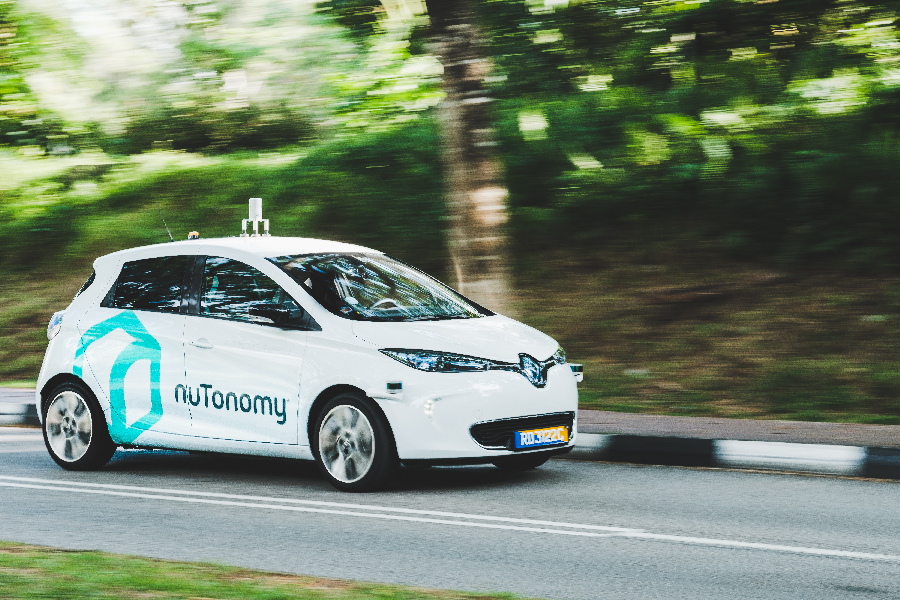
Robohub.org
Dr Nathan Griffiths: Driverless cars? How the road to the future will be driven by machine learning

Credit: nutonomy
Over the past few weeks, we’ve blogged about how machine learning is transforming research, nuclear decommissioning, and astronomy. Building on our “Ask the Experts” panel discussion on driverless cars last July, how might machine learning shape the way we move through and interact with the immediate environment around us?
As the last in our series of blog posts on machine learning in research, we spoke to Dr Nathan Griffiths to find out more about machine learning in transport. Nathan is a Reader in the Department of Computer Science at the University of Warwick, whose research into the application of machine learning for autonomous vehicles (or “driverless cars”) has been supported by a Royal Society University Research Fellowship.
What inspired you to study science? And why Computer Science particularly?
I have always been interested in how things work and understanding the patterns we see in the world around us. Science helps us to understand patterns, provides insights into how things work, and ultimately enables us to understand how complex structures can arise from simple rules. Computer Science appeals because it can be both a creative and an analytical science – we can use computers to create patterns, or use computers as tools to understand our world, including the patterns that exist within it, and predict patterns which may arise.
How is machine learning used in your research?
My research uses machine learning to give insights into how objects or people interact and how patterns emerge and evolve. This involves the use of computational models, known as agent-based modelling, to simulate the actions and interactions of entities (such as drivers or autonomous vehicles) to see how their decisions affect the wider systems in which they operate.
More specifically, machine learning can be used to analyse how cooperation emerges through interactions between objects. In the context of autonomous vehicles, there are many situations in which it is desirable to establish a cooperative environment, without the need for centralised control. For example, who should give way at a road junction where the rules are ambiguous or typically misinterpreted, such as flashing headlights to let another driver proceed? In this case, machine learning can be trained to predict what decisions a driver or autonomous vehicle will make. Machine learning algorithms will examine previous behaviours and learn from these behaviours, to then predict what will happen in the future. Many of the initial predictions will be incorrect, however the algorithm will modify its next predictions based on what it has learnt and continue to reduce its mistakes until it can make accurate predictions. An accurate algorithm could then be used to inform the decisions vehicles make and predict vehicle journeys and routes.
Modern vehicles are equipped with numerous sensors to collect vast amounts of data during vehicle journeys. For example cameras provide live images to the vehicle which are fed into an object-recognition machine learning algorithm which learns to identify and distinguish between entities such as pedestrians, cyclists or other vehicles on the road. The images can tell the vehicle how close the objects are and change the vehicle’s behaviour accordingly, such as by reducing speed to stay a safe distance from the car in front. The use of these data also enables transport to be made more efficient, such as through automatic traffic light signal detection and live notifications of parking opportunities which could help to reduce congestion.
What are the challenges in using machine learning in your field of research?
The techniques for extracting information from data and building predictive models are advanced, but perhaps the greatest challenge is to support the interface between machine learning and human users, which is likely to lead to greater public confidence in something like autonomous vehicles.
I also expect to see advances in techniques for dealing with “concept drift”, where changes in the world need to be accompanied by changes in a machine learnt model. Concept drift is the phenomena whereby predictions may become less accurate over time if the models do not adapt to changes in the environment. This could be an issue if learning models are not able to adapt to changes sufficiently quickly to react.
Currently, autonomous vehicles are good at detecting the world around them and reacting as necessary to changes on the road. However the next challenge is to enable machine learning systems to not only react to changes and adapt to previously unseen environments (such as a swerving car or the vehicle being driven in adverse conditions) but be able to understand the probabilities of what it thinks might happen. For example, a car which is driving alongside a busy footpath will not just react to a pedestrian stepping out into the road, but will understand that there is a chance that this might happen and actively take measures to reduce risk in case it does, perhaps by positioning itself further away from the curb.
So what are the future prospects for machine learning?
The future is very bright for machine learning. Machine learning is fundamental to the development of driverless vehicles and is rapidly transforming the automotive world; vehicle manufacturers are very keen to get computer scientists on board for the betterment of their projects.
Machine learning is already central to how our vehicles work, underpinning systems such as lane-keeping assistance, reactive cruise control and automated vehicle personalisation and recognition. There is a wide and increasing range of applications that machine learning will allow us to tackle and it is enabling us to develop fully autonomous vehicles, which will be ubiquitous in the future. I also envisage that autonomous vehicles will be connected, such that the information and insights that one vehicle has learnt can be transferred to another; which may prove particularly useful for managing concept drift.
The Royal Society is undertaking a project about machine learning and its impact for the UK economy and society. To find out more please visit our project page.
This post was originally published on the Royal Society. Click here to view the original post.
tags: Algorithm AI-Cognition, Automotive, cx-Research-Innovation, interview, machine learning, Research, Robot Car, Sensing






